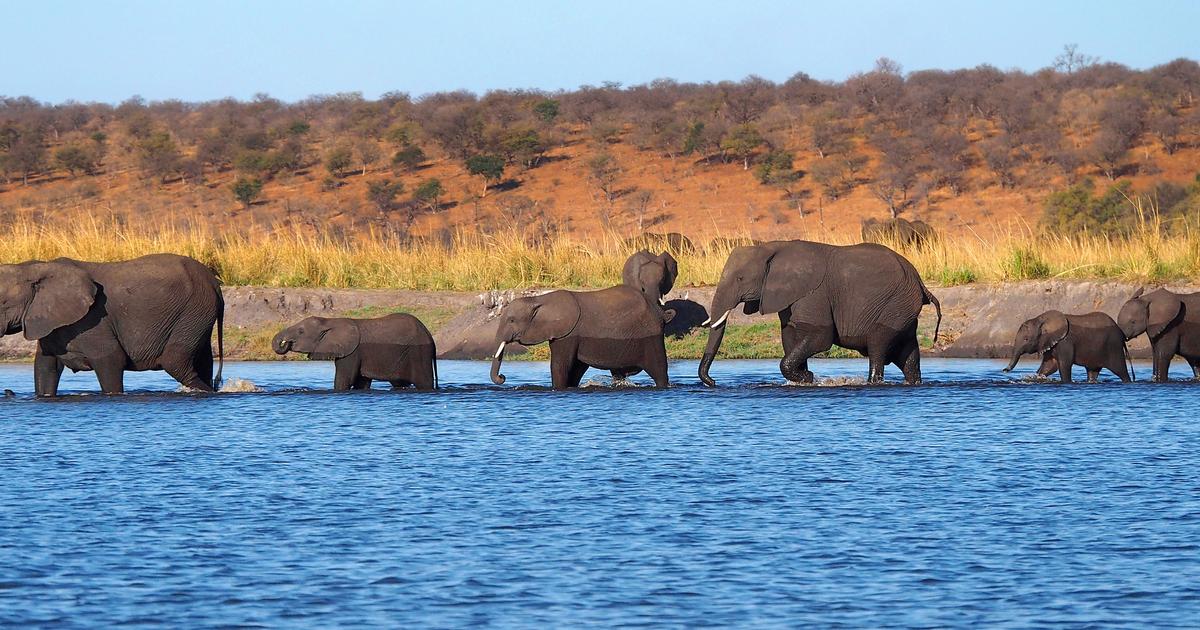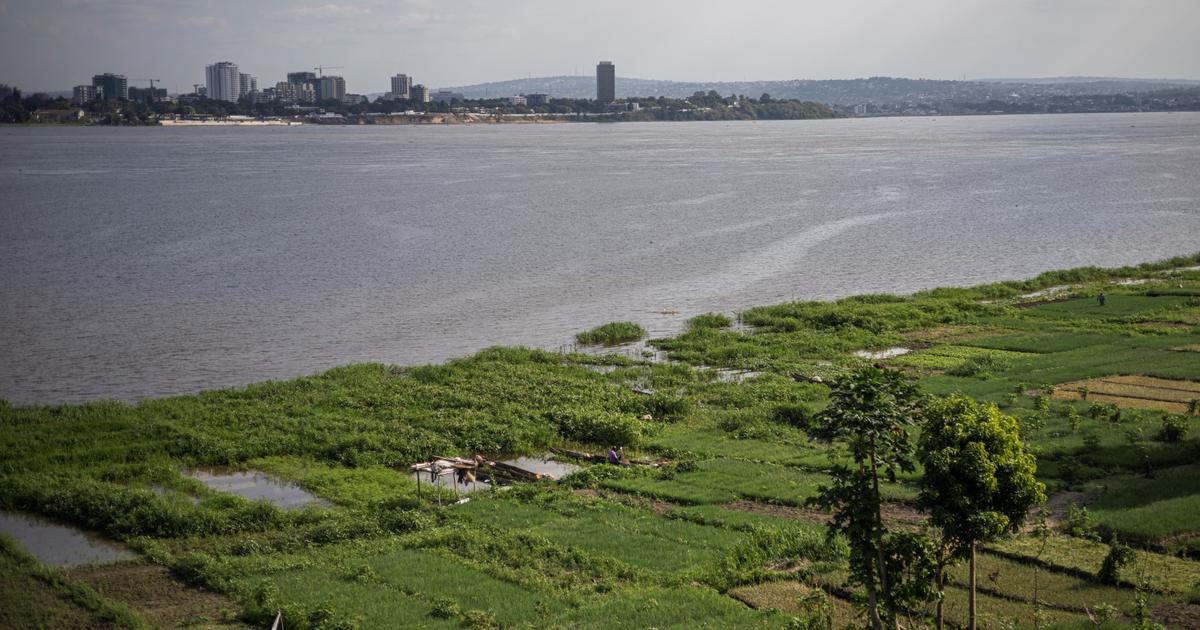Lesotho: all about the landlocked country in South Africa
Created: 03/01/2022, 12:44 p.m
Center of Maseru, the capital of Lesotho © IMAGO / Friedrich Stark
Lesotho is a kingdom in South Africa that was known as Basutoland until 1966.
The country has a parliamentary monarchy and is completely surrounded by the Republic of South Africa.
Many residents still live according to old traditions.
Lesotho is a monarchical enclave in South Africa.
The British Crown Colony once known as Basutoland became independent in 1966.
Although the country is making efforts for tourism, it is still considered very dangerous due to its high crime rate.
Maseru - With an area of 30,355 square kilometers, Lesotho is one of the smaller countries in Africa and is just as big as Belgium.
Due to its high location and the many mountain ranges, some of which are uninhabitable, the country is also often referred to as "The Kingdom in the Sky".
Far less royal is the current situation of the residents.
The country has struggled with poverty, famine and high unemployment in recent years.
Lesotho: Early History and King Moshoeshoe I
Even today, cave and rock paintings bear witness to the fact that the area of today's Lesotho was settled 25,000 years ago by a hunter-gatherer people called the San.
With the migration of the Bantu tribes from the 4th century, the Nguni peoples arrived in the region, who lived as farmers and shepherds.
The San were driven out by the Basotho and Tswana groups from about the 11th century.
When the Zulu king Shaka wanted to expand his empire in the 19th century, violent conflicts repeatedly broke out in the Basotho area.
Under the leadership of Moshoeshoe I, the Zulu onslaught was repelled.
He established forts at Butha-Buthe and Thaba Bosiu, thus launching the Basotho nation.
When tensions arose between the Boers and the British in the Cape in 1830 and Moshoeshoe's troops were threatened, the chief asked the British for protection.
In an 1843 treaty, the British pledged their support.
However, this agreement was dissolved again in 1859 because of the tensions in British relations with the Boer republics.
Lesotho as British Crown Colony "Basuotland"
However, as the Basotho was unable to withstand repeated attacks by the Boers in the years that followed, the British intervened again to ward off an imminent defeat.
In 1868 the area finally became a British colony as "Basutoland" and after the death of Moshoeshoe it was attached to the Cape Colony.
However, since the Basotho people were not granted representation in the Parliament of Cape Colony, there were uprisings against the British.
The conflicts resulted in Basutoland being placed directly under British administration as a crown colony in 1884.
After an administrative reform in 1938, the number of tribal chiefs and their power were greatly reduced.
With increasing urbanization and improved education, however, the influence of the royal family also decreased significantly in the following decades.
Lesotho becomes independent in 1966
After the Second World War, the quest for independence gained momentum.
In 1959 a first colonial constitution was signed.
The first free elections took place in 1960, the year King Moshoeshoe II was crowned.
The 1965 elections were won by the BNP (Basotho National Party), which led Basutoland to independence a year later under the name Lesotho.
The constitutional monarchy was established as the form of government.
However, in the following years there were repeated heated arguments between the different parties.
With Lesotho supporting supporters of the ANC (the banned anti-apartheid party), pressure from South Africa grew and Moshoeshoe II was forced to flee into exile.
His office was taken over by his son as King Letsie III in 1990, who also initiated the creation of a new democratic constitution in 1993.
Nevertheless, the government also suffered from major national crises in the years that followed.
The current prime minister, Moeketsi Majorao, took over from his predecessor Thomas Thabane in 2020.
Lesotho: The Political System
According to the 1993 constitution, Lesotho is a parliamentary monarchy with a bicameral parliament.
The Prime Minister is the head of the government and cabinet.
He also holds executive power.
The king has a representative function.
Although he is forbidden from taking an active part in political events, he is still considered part of the executive branch.
The monarchy is hereditary, but the Barena Council can also depose the king.
Legislation is in the hands of the Parliament, which consists of the Senate (upper house) and the National Assembly (lower house).
The Senate, in turn, consists of 33 members, 22 of whom are tribal chiefs of the country.
The majority of members pass on their seat in the Senate to their descendants.
The National Assembly, on the other hand, is directly elected by the people.
Lesotho: facts at a glance
Capital: Maseru
Official language: Sesotho and English
Area: 30,355 square kilometers
Population: 2.1 million (as of 2019)
Currency: Loti (LSL), South African Rand (ZAR)
Administrative division: 10 districts
Religion: 90% Christian
Lesotho: Languages and Population
Lesotho has two official languages.
The official one is Sesotho, a Bantu language that is also widespread in other parts of South Africa and is also spoken as the mother tongue by 99 percent of the population.
English as the official language is still a remnant of Lesotho as a British crown colony.
The largely uniform language is also due to the ethnic homogeneity of the country.
The more than two million inhabitants can be attributed almost entirely to the southern Bantu people of the Basotho.
Lesotho is thus also one of the few African nation states whose people share a common culture, identity and tradition.
Lesotho: Geography and Cities
Lesotho is not only a landlocked country, but also, like San Marino or Vatican City, one of the few countries in the world that is completely surrounded by just one state - in this case South Africa.
The western part of the country lies on a high plateau that is around 1,400 to 1,700 meters above sea level and is the country's main settlement area.
The eastern part is criss-crossed by mountains, some of which are over 2,000 meters high.
Because there is no point in the whole country that is lower than 1,000 meters, Lesotho is nicknamed the "Kingdom in the Sky."
Due to the geographical situation, the population is unevenly distributed across the country.
Well over two-thirds of the people live in the lower western parts of the country, where the more fertile areas of the country are also located.
The largest metropolitan area is the capital Maseru and its environs.
The largest cities of Lesotho at a glance:
1
Maseru: 330,760 inhabitants, Maseru region
2
Teyateyaneng: population 61,475, Berea region
3
Maputsoe: 55,541 inhabitants, Leribe region
4
Mohale's Hoek: 40,040 inhabitants, Mohale's Hoek region
5
Mafeteng: 39,754 inhabitants, Mafeteng region
6
Hlotse: 38,558 inhabitants, Leribe region
7
Butha-Buthe: 35,108 inhabitants, Butha-Buthe region
8
Quthing: Population 27,314, Quthing region
9
Qacha's Nek: Population 15,917, Qacha's Nek region
10
Thaba-Tseka: Population 15,248, Thaba-Tseka region
11
Mokhotlong: Population 12,940, Mokhotlong Region
12
Smonkong: 7,856 inhabitants, Maseru region
Lesotho: Interesting facts about the country
In terms of per capita income, Lesotho is one of the poorest countries in the world.
The unemployment rate is high and a large part of the population works directly in agriculture, in which livestock farming plays an important role.
Nevertheless, the country has repeatedly suffered from enormous famines (most recently in 2012).
The high AIDS rate continues to be one of the country's major demographic problems.
In 2017, around 24 percent of 15 to 49 year olds were infected with the HI virus.
This is the second highest rate in the world after Eswatini.
Due to the enormous spread of the virus, population growth has also slowed down considerably.
Another decisive factor is the government's lack of information policy.
In addition, the healthcare system suffers from an enormous shortage of staff.
In addition, tuberculosis is still widespread.
However, due to the history of the country, the Sesotho culture, which has developed over centuries and whose traditional center is the village, is unique.
Here there are fixed structures with traditional customs that form a contrast to city life.
The symbol animal is the Basotho pony - it is considered the most important means of transport in the mountains and has been an integral part of everyday village life since the 19th century.














